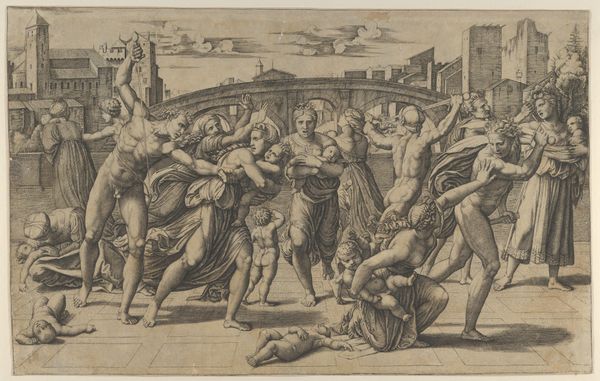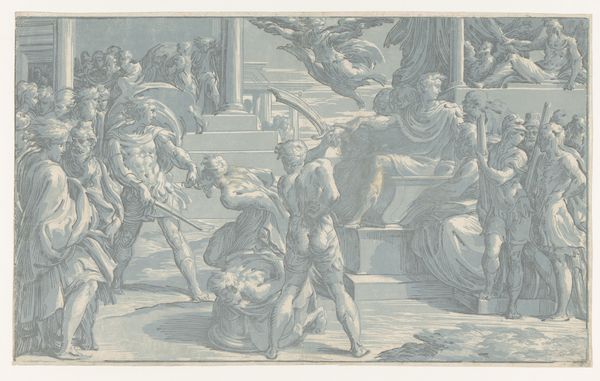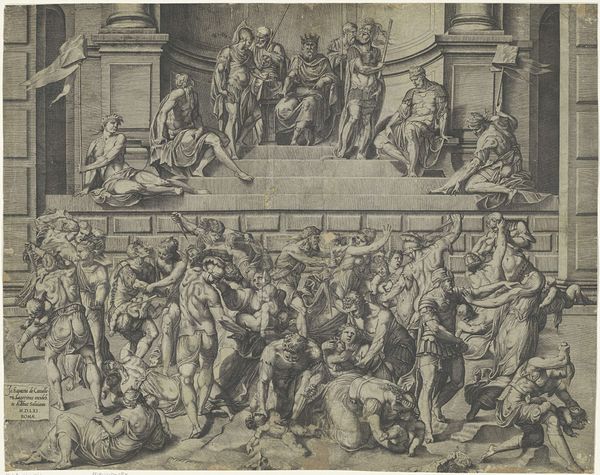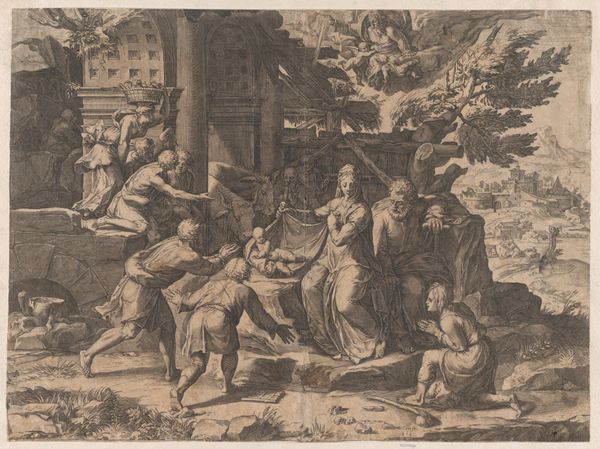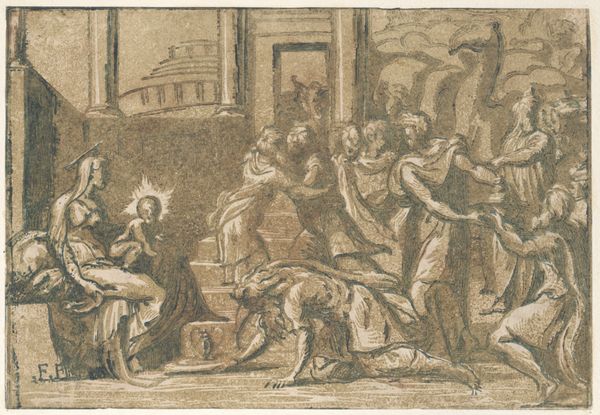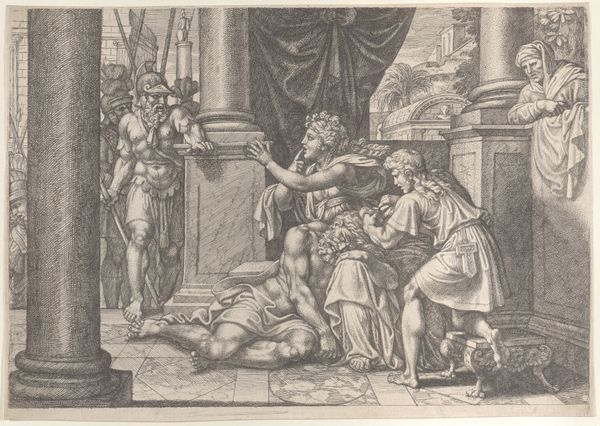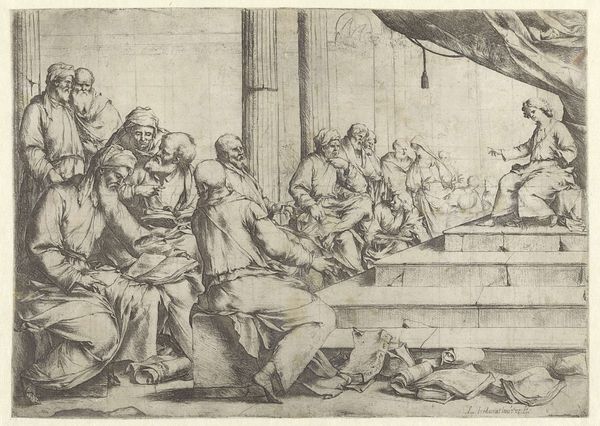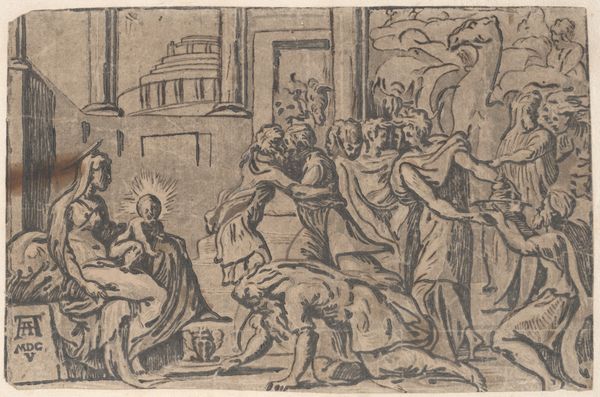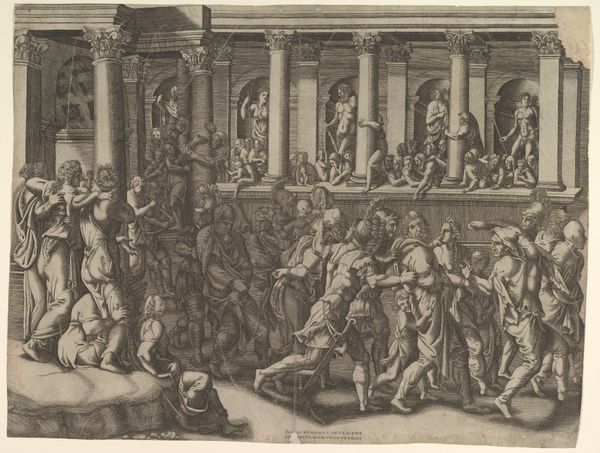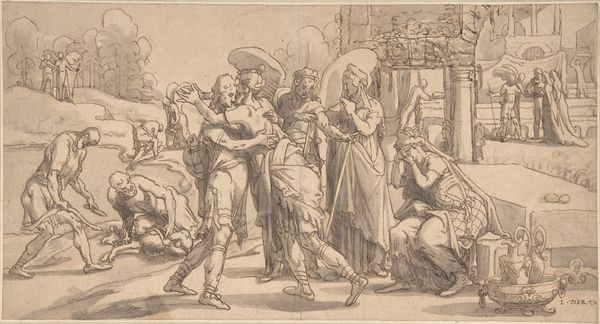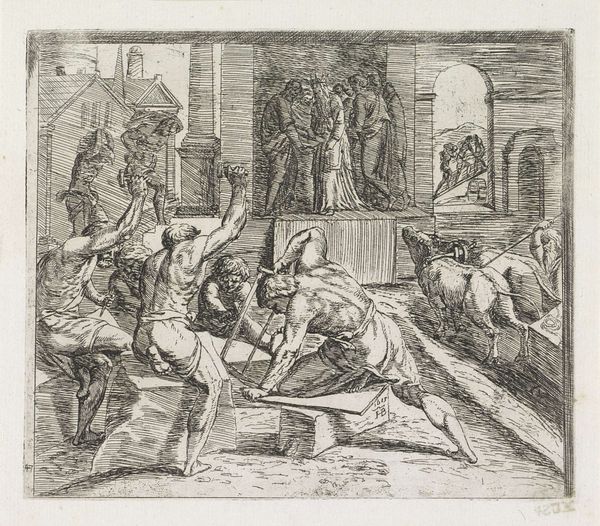
drawing, ink
#
drawing
#
baroque
#
figuration
#
ink
#
14_17th-century
#
history-painting
Copyright: Public Domain
Curator: This is a drawing entitled *Queen Jezebel Being Devoured by Dogs* by Ciro Ferri. It’s rendered in ink, showcasing Ferri’s command of Baroque aesthetics. The composition is intensely dynamic. What strikes you first about this piece? Editor: The sheer violence of the scene! It’s raw, brutal. Jezebel is being torn apart as people watch. It feels like a statement on power and its consequences. What kind of statement do you think Ferri was trying to make here? Curator: Exactly. Now, consider this work within the context of its time. The Baroque era was heavily influenced by religious and political turmoil. Ferri is illustrating a biblical narrative, a moment of divine retribution against a powerful, foreign queen. But how does Ferri engage with this historical subject matter to advance his own political viewpoint, I wonder? Editor: So, this is more than just illustrating a Bible story? Curator: Absolutely. Ferri isn’t just depicting an event; he’s framing a commentary on power, particularly the dangers of unchecked authority. Notice how the male figures orchestrating Jezebel's demise seem to stand at a remove, both literally and figuratively, from the gruesome scene. What does it suggest? Editor: That they’re complicit but avoiding responsibility? It’s unsettling how detached they seem. The power dynamic makes it an early visual for feminist discussions regarding patriarchal dominance and female punishment when transgressing patriarchal societal norms, particularly around female sexuality. Curator: Precisely. And Jezebel, often painted as an icon of immoral foreign influence, here becomes a symbol of the consequences of opposing patriarchal structures and systems of power. Seeing the piece today reminds us that we're always interpreting history through a contemporary lens. Editor: This definitely gives me a lot to think about in terms of how historical narratives intersect with gender, power, and resistance! Curator: Agreed. It underlines how art, even when depicting seemingly remote historical events, is perpetually in dialogue with the present.
Comments
No comments
Be the first to comment and join the conversation on the ultimate creative platform.
